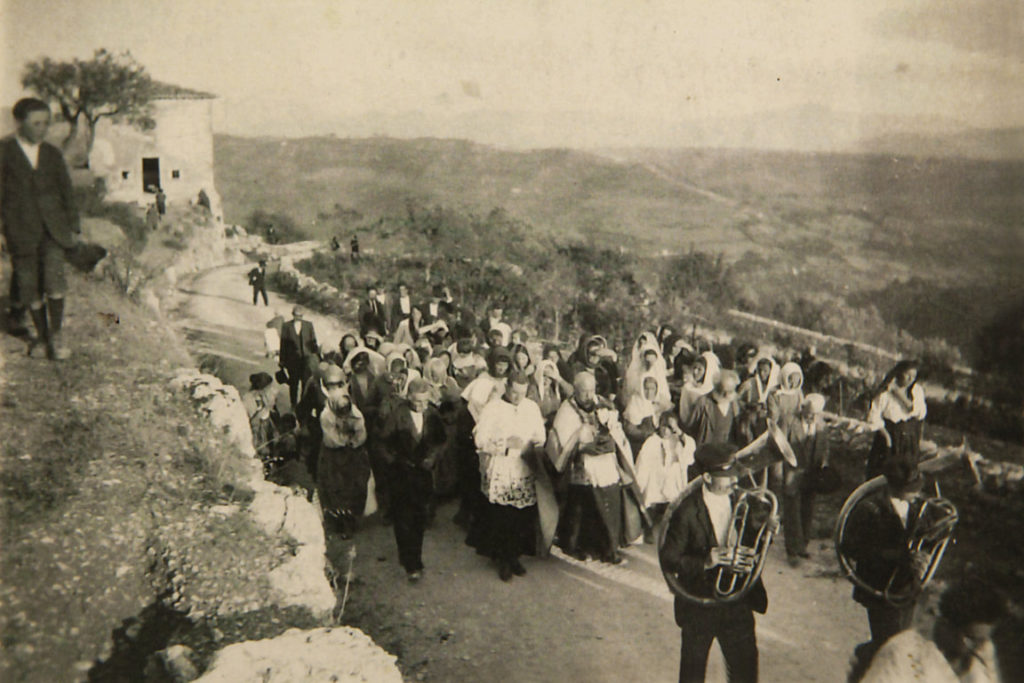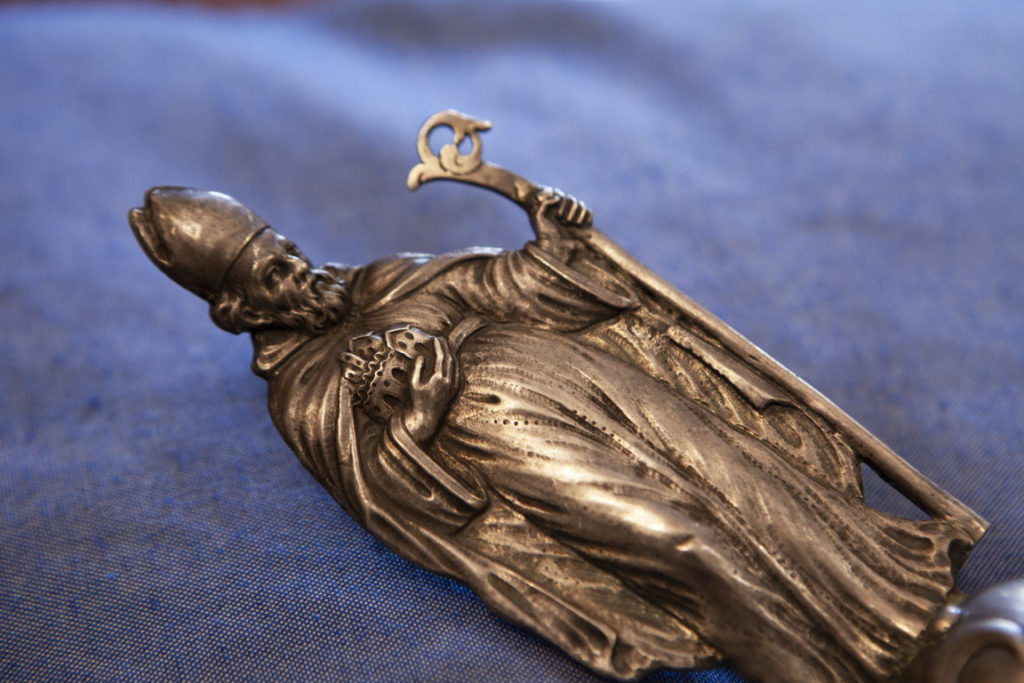The Feast of Saint Giles the Abbot and Saint Vincent Ferrer in Mompeo
Historically, the 1st of September marks the celebration of the patron saints, Saint Giles the Abbot and Saint Vincent Ferrer. Mompeo is, in fact, the only village in the Sabina region to have two patron saints.
It was the Naro family who brought the cult of Saint Giles when they took possession of the castle. Both the gold and bronze bust carried in procession and the thirty-centimeter silver effigy of the saint are believed to date back to the 1600s and are said to be the work of Alessandro Algardi, an Italian sculptor who lived between 1598 and 1654.
This celebration is not exclusive to Mompeo but is shared by other locations—such as Montoro, in the province of Narni—where the Naro Orsini family also owned lands.
The cult of Saint Giles indeed has ancient roots. Saint Giles the Abbot was a hermit in southern France and became a widely venerated saint during the Middle Ages. His devotion originated in Provence, where he founded a monastery near Arles, becoming its first abbot. He likely died there in 730 AD, and the monastery was named after him.
At the end of the 9th century, a basilica was built over the site of his crypt, which houses his remains and became a pilgrimage destination. His cult spread to central Italy, eastern Europe, and even Rome, where a church bears his name.
He is venerated as the patron saint of lepers, the disabled, and weavers, and is celebrated on the 1st of September.
As in many other patron saint festivals across central Italy, Mompeo maintains the annual ritual of assigning the silver statuette—known locally as the mazzetta—to the festarolo, the person entrusted with housing the effigy in their home, awaiting its handover to the next festarolo, who will continue the sacred relay.
In other towns, the new bearer of the effigy is often chosen by drawing lots, like an oracle. In Mompeo, the festarolo voluntarily chooses to host the saint in their home, making an official request to the parish priest and clearly accepting the responsibilities that come with it, such as organizing events for the so-called cerca, a fundraising effort for the celebration, and offering a breakfast banquet to the marching band on Saturday morning following the traditional wake-up call.
With the dissolution of many of the confraternities once responsible for safeguarding the image of the patron, the tradition of the “saint in the home” reflects a scaled-down version of that practice, giving it a more domestic, intimate character. Still, the ritual brings us back to a complex and rather archaic symbolic universe.
The passing of the mazzetta represents an investiture—an actual rite of passage. The person who receives this honour enters, for one solar year, into close contact with what the sacred object carries with it, imbued with the power granted by the entire community. A double protection takes place: the saint protects the village, if the village protects the saint.
The shared rule, collectively upheld, is that the effigy must never leave—not only the festarolo’s home—but the village itself.
In shamanic cultures, an object charged with power and entrusted to a disciple forms a magical bond. If it is taken too far from its source, that bond breaks, and the object loses its power. Similarly, from the moment the mazzetta is passed on, the new festarolo symbolically subsumes the power of the object and remains intimately bound to it for an entire year.
The structure of the feast has evolved over time, while preserving its essential religious framework: the exit of the mazzetta from the home of the former festarolo and its handover to the new one; the procession—once said to circle the village twelve times—which departs from the church, winds through the village’s internal streets, descends to the Chiesola, and reenters through the southern gate, crossing via Roma; and finally, the ritual wake-up call by the town band, precisely at six in the morning on Saturday.
What has expanded over time is the convivial aspect of the celebration, with the intention of allowing people to enjoy the village for as long as possible—whether tourists, visitors from nearby areas, or especially those inhabitants who, by choice or necessity, now live far from their roots and return for this event so deeply embedded in the collective consciousness.
This phenomenon has continued since the postwar period, linked to the great migration toward urban centres and the resulting depopulation of rural areas and villages. The feast of the patron saint becomes the reason for returning home.
Those who have lived away for decades wait for the summer to come back—and the boundary before their next departure is marked by the feast of Saint Giles, which thus functions as a moment of communal reassembly, reconnecting a community scattered through time and space.
In the time leading up to the celebration, hybrid associations of locals and non-locals are also formed—such as the 2025 Committee of Festaroli di Sant’Egidio, made up of native people of the village as well as those who have developed an emotional connection with it and now live there intermittently.
It is precisely this “hybrid” committee that restored the tradition of passing the mazzetta to the new head festarolo on the very day of the feast and having it kept in a private home—a practice that in recent years had been fading, with the community instead choosing to safeguard the precious effigy in the church.
This is a particularly telling element in the preservation of traditions: when, paradoxically, it is someone external to the core community who contributes to restoring order within the ritual.
This is how the old comes back to life, echoing as something new, just like the revival of the custom of hanging the village’s finest blankets from windows during the celebration.
This element has been included in the Register of Intangible Heritage of local interest of the Municipality of Mompeo, as part of Intervention 4 “Activation of the Observatory on the Intangible Cultural Heritage of the Territory through the application of the REIL methodology – Register of Intangible Heritage of Local Interest”, within the “ MOMAC – MOMPEO UN MODELLO DI ACCOGLIENZA” project, funded by the NRRP (National Recovery and Resilience Plan), Mission: Digitalisation, innovation, competitiveness, culture and tourism, Component: Tourism and culture 4.0, Investment 2.1 “Attractiveness of villages” CUP C79G22000000006.




